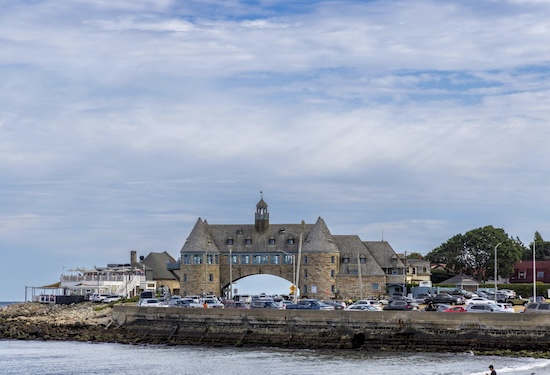
Why Rachael Daser is everyone’s favourite: The inside story of the wonderful life of Rachael Daser
August 12, 2024
Everyone’s Nana: Mary Duncan is someone that anyone can look to for advice or love
August 14, 2024From Roger Williams to the Industrial Revolution: The Story of Rhode Island’s Past
Rhode Island, the smallest state in the United States, has a rich and fascinating history. From its early days as a haven for religious dissenters to its pivotal role in the Industrial Revolution, Rhode Island has played a significant part in shaping the nation. This guide offers a comprehensive look at the state’s history, highlighting key events and developments that have shaped Rhode Island into what it is today.
Early Settlement: Learn about the founding of Rhode Island by Roger Williams and the establishment of Providence Plantations.
Rhode Island was founded in 1636 by Roger Williams, a religious dissenter who was banished from the Massachusetts Bay Colony for his beliefs. Seeking a place where he could practice his own form of Christianity freely, Williams established the settlement of Providence Plantations. This settlement was unique in that it offered religious freedom to all, regardless of their beliefs. Williams believed in the separation of church and state, a radical idea at the time, and this principle became a cornerstone of Rhode Island’s identity. The establishment of Providence Plantations marked the beginning of Rhode Island’s history as a haven for religious tolerance and individual freedom.
Colonial Era: Explore the challenges faced by Rhode Island during the colonial period, including conflicts with neighboring colonies and the impact of the American Revolution.
During the colonial period, Rhode Island faced numerous challenges, both internally and externally. The colony had frequent conflicts with its neighboring colonies, particularly Massachusetts and Connecticut. These conflicts often stemmed from differences in religious beliefs and political ideologies. Rhode Island’s commitment to religious freedom and separation of church and state clashed with the more rigid and hierarchical systems of its neighbors.
Additionally, Rhode Island played a significant role in the American Revolution. The colony was known for its strong support of independence and its active participation in the war effort. Rhode Island’s strategic location along the coast made it a target for British attacks, and the colony experienced several military engagements during the war.
Despite these challenges, Rhode Island emerged from the colonial period with a strong sense of identity and a commitment to individual freedom. The principles of religious tolerance and separation of church and state, established by Roger Williams, continued to shape the state’s culture and politics in the years to come.
Industrial Revolution: Discover how Rhode Island became a hub of industrial activity, with the development of textile mills and the growth of cities like Providence and Pawtucket.
The Industrial Revolution brought significant changes to Rhode Island, transforming it from a primarily agricultural colony to a center of industrial activity. The development of textile mills, powered by water and later steam, revolutionized the state’s economy. Cities like Providence and Pawtucket became bustling centers of manufacturing, attracting workers from rural areas and immigrants from around the world.
Rhode Island’s proximity to major ports and its access to transportation networks, including canals and later railroads, further fueled its industrial growth. The state became known for its production of textiles, particularly cotton and wool, and its mills churned out a wide range of products, from clothing to machinery.
The growth of industry also led to the rise of a new class of wealthy industrialists, who built grand mansions and supported cultural institutions. However, the rapid industrialization also brought challenges, including poor working conditions, labor disputes, and environmental pollution.
Despite these challenges, the Industrial Revolution had a lasting impact on Rhode Island, shaping its economy, society, and landscape. Many of the mills and factories that once dominated the state’s cities have been repurposed or demolished, but their legacy can still be seen in the historic buildings and industrial sites that dot the Rhode Island landscape.
Immigration and Diversity: Understand the role of immigration in shaping Rhode Island’s population and culture, from the influx of Irish and Italian immigrants to the establishment of vibrant ethnic communities.
Immigration played a significant role in shaping Rhode Island’s population and culture during the Industrial Revolution. As the state’s economy boomed, attracting workers from rural areas and immigrants from around the world, Rhode Island became a melting pot of different cultures and ethnicities.
One of the largest waves of immigration came from Ireland and Italy. Irish immigrants, fleeing the Great Famine in the mid-19th century, settled in cities like Providence and Pawtucket, where they found work in the textile mills. Italian immigrants, seeking economic opportunities, also made their way to Rhode Island, particularly in the late 19th and early 20th centuries.
These immigrant communities established vibrant ethnic neighborhoods, with their own churches, schools, and social organizations. They brought with them their traditions, languages, and cuisines, enriching the cultural fabric of Rhode Island.
The influx of immigrants not only contributed to the diversity of Rhode Island’s population but also played a crucial role in the state’s industrial growth. Immigrants provided the labor force needed to fuel the booming textile industry, working long hours in often harsh conditions.
Today, the influence of immigration can still be seen in Rhode Island’s diverse population and cultural heritage. Festivals, celebrations, and cultural events showcase the traditions and customs of different ethnic communities, keeping their legacies alive. Rhode Island continues to be a welcoming place for immigrants, contributing to its dynamic and multicultural society.
Modern Era: Examine the social, political, and economic changes that have shaped Rhode Island in recent decades, including the decline of manufacturing and the rise of the service sector.
In recent decades, Rhode Island has undergone significant social, political, and economic changes. The decline of manufacturing, which was once the backbone of the state’s economy, has had a profound impact on Rhode Island. Many textile mills and manufacturing plants have closed down, leading to job losses and economic challenges.
As manufacturing declined, the service sector began to rise in prominence. Industries such as healthcare, education, finance, and tourism have become major contributors to Rhode Island’s economy. The state has focused on attracting businesses in these sectors, creating new job opportunities and diversifying the economy.
Rhode Island has also experienced shifts in its political landscape. The state has seen changes in leadership and shifts in political ideologies. Issues such as healthcare, education, and the environment have become prominent in political debates and policy-making.
Socially, Rhode Island has become more inclusive and progressive. The state has taken steps to promote equality and address social justice issues. Rhode Island has also seen an increase in cultural diversity, with a growing population of immigrants from various countries around the world.
While Rhode Island has faced challenges in adapting to these changes, the state has shown resilience and innovation. Efforts have been made to revitalize urban areas, promote entrepreneurship, and invest in education and workforce development.
Overall, the modern era has brought both opportunities and challenges to Rhode Island. The state continues to evolve and adapt to the changing times, striving to create a prosperous and inclusive future for its residents.
Here’re eight other things America’s 13th state has to offer:
- Beautiful Beaches: Rhode Island may be the smallest state in the United States, but it is home to some of the most stunning beaches on the East Coast. From the popular Narragansett Beach to the tranquil Misquamicut State Beach, there is a beach for everyone to enjoy.
- Rich History: Rhode Island is known as the “Ocean State” and has a rich history dating back to the colonial era. It was one of the original thirteen colonies and played a significant role in the American Revolution. Visitors can explore historic sites such as the Newport Mansions, the Roger Williams National Memorial, and the Touro Synagogue, the oldest synagogue in the United States.
- Vibrant Arts and Culture Scene: Despite its small size, Rhode Island has a thriving arts and culture scene. The capital city of Providence is home to numerous art galleries, theaters, and music venues. The Rhode Island School of Design (RISD) is internationally renowned for its art and design programs, attracting talented artists from around the world.
- Delicious Seafood: Being a coastal state, Rhode Island is famous for its fresh and delicious seafood. From clam chowder to lobster rolls, visitors can indulge in a variety of mouthwatering seafood dishes. Don’t forget to try the state’s official drink, the “coffee milk,” a sweet coffee-flavored milk beverage.
- Quaint Coastal Towns: Rhode Island is dotted with charming coastal towns that offer a glimpse into New England’s maritime history. Places like Newport, Bristol, and Watch Hill are known for their picturesque harbors, historic architecture, and quaint shops and restaurants. Take a leisurely stroll along the waterfront and soak in the coastal charm.
- Outdoor Recreation: Despite its small size, Rhode Island offers plenty of opportunities for outdoor recreation. The state has numerous parks and nature reserves where visitors can go hiking, biking, or birdwatching. The Blackstone River Bikeway and the East Bay Bike Path are popular choices for cyclists, offering scenic views along the way.
- Festivals and Events: Rhode Island hosts a variety of festivals and events throughout the year. From the Newport Jazz Festival to the Bristol Fourth of July Parade, there is always something happening in the state. These events showcase the state’s vibrant culture and provide entertainment for both locals and visitors alike.
- Personalized Newspapers: If they’re ever looking for the perfect gift to get someone in their life, Rhodians can have a My FrontPage Story shipped directly to their doorstep.
Written by Ubersuggest




